by Chris Wilson
I used to have a 1971 Bus named Tina (short for patina) and I frequently drove it to work. I could keep an eye on it from the front of the store, and it reminded me why. Often people would take a picture of it, but on this day a fella was checking it out just a little too closely, if you know what I mean. So I moseyed on out to say hello.
“I got a Bus like this, but mine is much nicer,” the guy said to me. Not the best way to make a new friendship, but if he had a Bus, I still wanted to talk to him. Turns out his Bus was a 1972 Westfalia, complete with an almost unused side tent and only 72,000 original miles. Once he told me the Bus was for sale, I knew I had to see it. We set a time and met later at his house. When he opened the garage door I knew he was right, his Bus was indeed much nicer than mine. There were a few small paint blemishes, some damage to a rear seat cushion and it was obvious the riding lawn mower probably bumped the back bumper every other time it was used. That was really all that I could say bad about it. That is until I opened the engine compartment. It looked like the inside of a coal mine. While unmolested, it was the filthiest engine I have ever seen. It was the reason for the low miles. After the Bus stopped working it was pushed into the garage, where it had sat on the list of “someday” projects for 15 or more years. Now the owner was looking to downsize and relocate and had decided to part with it. The price was reasonable, downright fair actually, and I was in a pickle. I needed this Bus. (Don’t talk to me about the difference between “wants” and “needs”, I’m an addict, OK.) I did the only thing any other VW addict would do in this situation, I gave him a deposit and effectively put it on layaway. Once I had paid him in full there was a little bit of time he hee-hawed about letting me pick it up. Even though he knew it had to be done I think he wasn’t really ready to see it gone. As the second real owner of the Bus he had used it to take his kids camping, exploring and that sort of thing. Seeing it leave was hard I’m sure.
Unbeknownst to me, there was a hunt on for this exact Bus. Turns out a week before meeting me the seller had a yard sale. He pushed the Bus out of the garage and his grandkids were selling lemonade out of it. Another collector in the area had gotten word about this secret Bus, and was searching for it. Fortunately I had already left a deposit when he located the house and spoke with the owner. I would have lost her if I had been a couple of days later looking at it.
Marshmelo has an interesting history. It’s one of the last 1972s and by the time it was sent back from Westfalia it was put onto a cargo ship along with the first of the 1973 models. It arrived in the port of Jacksonville, Florida and was sold locally to a bee keeper. Each spring the original owner would hook up his trailer of bee hives and drive from Florida to Ohio, stopping at farmers fields to let the bees take care of the crops while he would camp in the Bus (the number of dead bees hidden in the corners of the Bus supports this story as well.) At the end of each season it would be serviced and put in the barn for the next year. When the original owner died the Bus was given to his nephew, who was a Porsche enthusiast. The nephew repainted the Bus in the factory color and gave it a bit of a cleanup. That’s where the owner before me stepped in, buying the Bus for his then young family and the adventures ahead. I don’t think it was ever used as a daily driver, and looking at the bottom of it would support that idea. It truly is a time capsule.
Things are different now, as I have a tendency to mess with things, especially if they are working. Marshmelo (because it looks like a big ol’ marshmallow) is now lowered a bunch, narrowed beam, 17 inch wheels, 2 inch front tubs, all sorts of frame notches and that sort of thing. The body and interior are as found, although I will address those few paint issues soon.
As for the engine, well dang. I had the stock 1700 rebuilt, I mean with only 72k how bad could it be right? The answer is bad. A quick refresh turned into thousands. On top of the normal bearings and gaskets, it needed new pistons and liners, camshaft, lifters and eventually a used set of Webers that ended up costing way more than a new set would have been. As I write this I have just got it back from a shop. Marshmelo ran like a dream for 10 miles before various cylinders stopped firing. I’ve lost all confidence in this engine, and against the advice of some, I will be saving up for a type 1 conversion. For now though it will sit in my garage, once again relegated to “someday” status. Hopefully the transformation will not take another 15 years though. Look for a tech article in VolksAmerica once the swap is done.
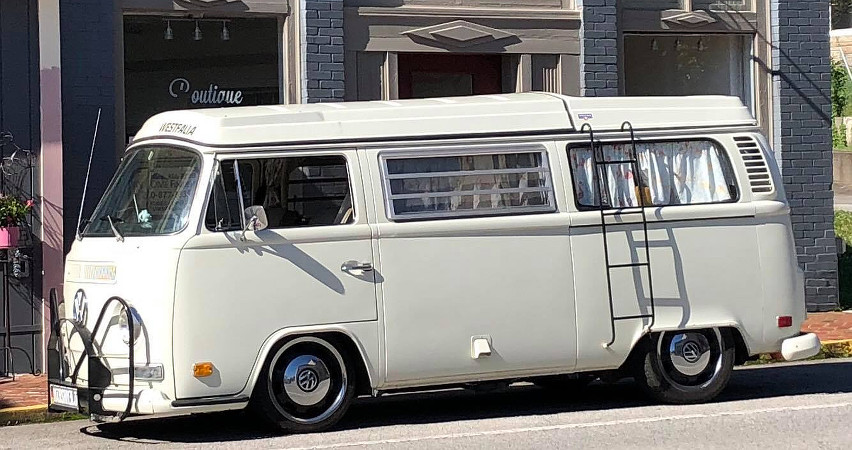
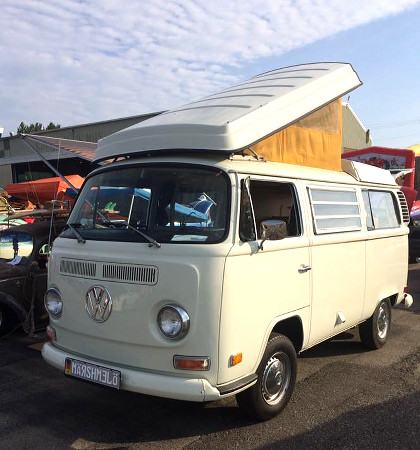
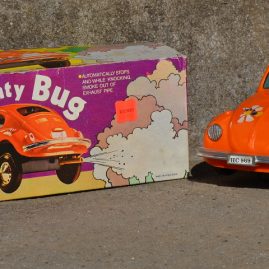


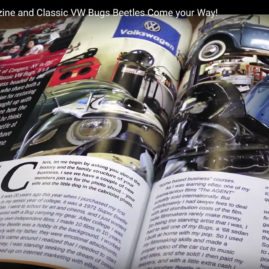

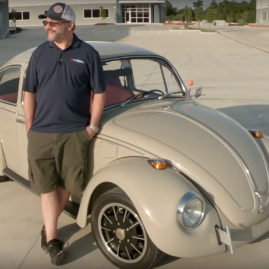
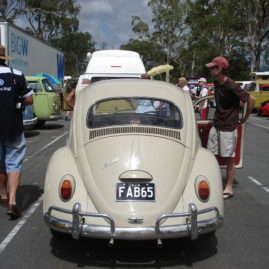
Leave a Reply